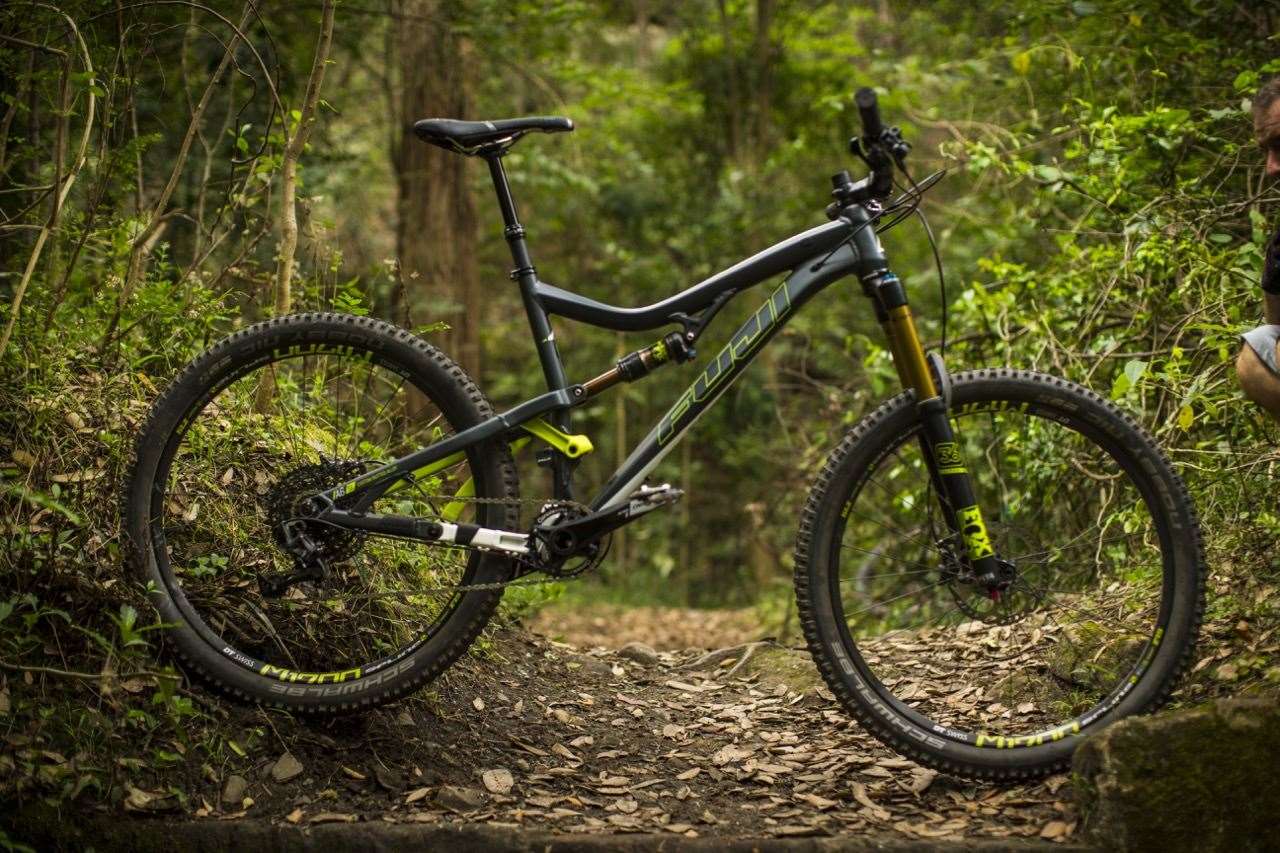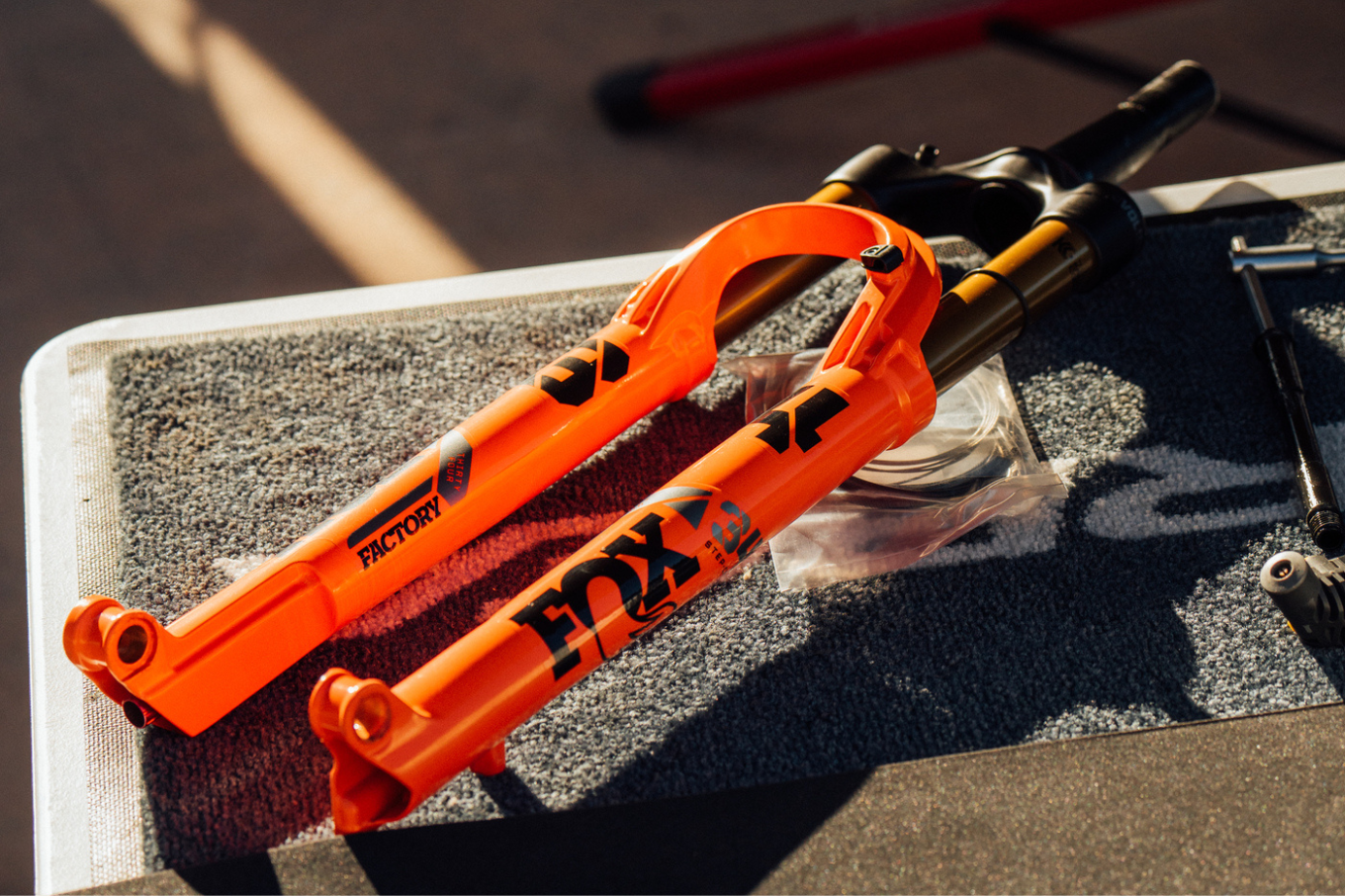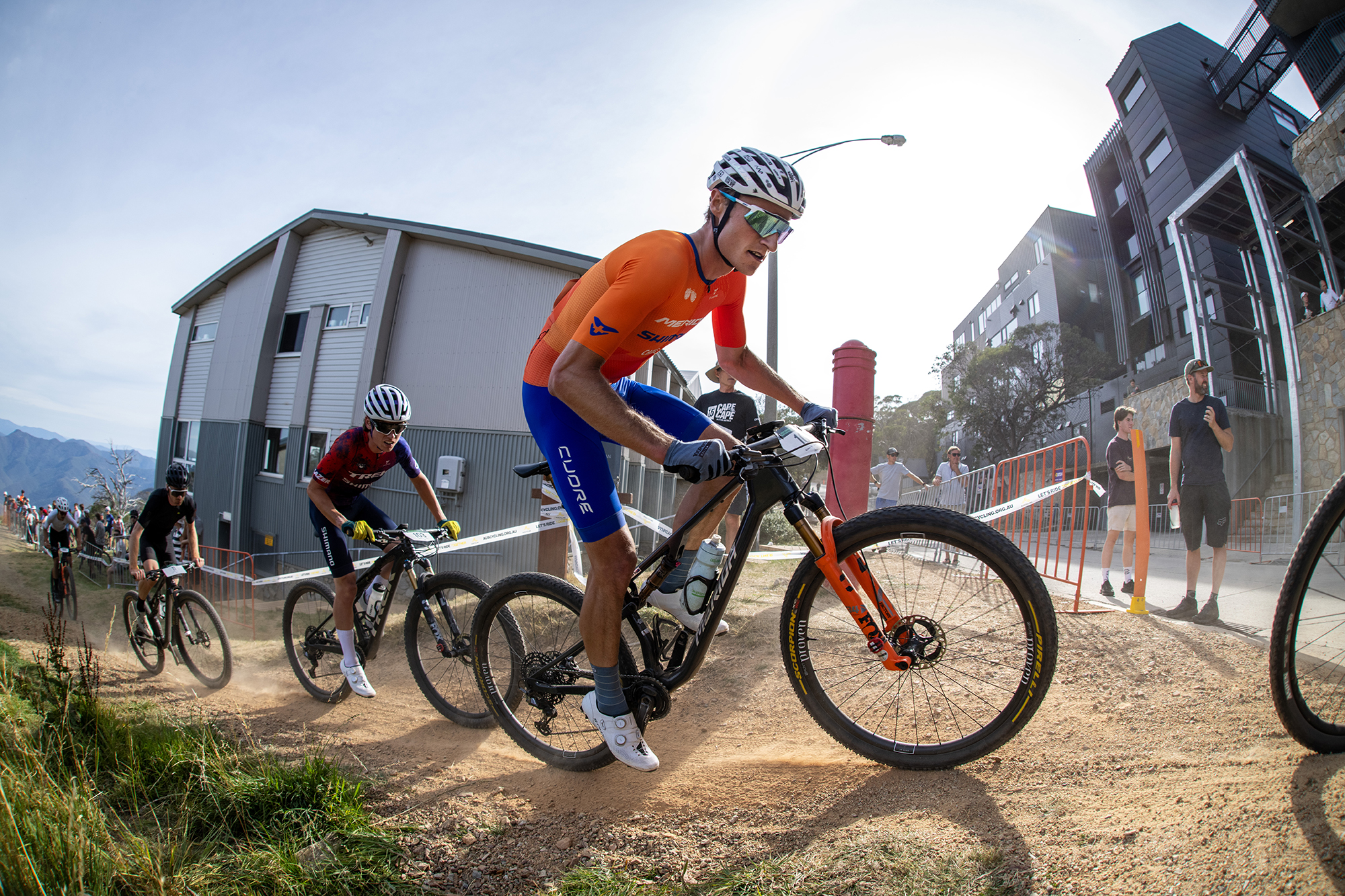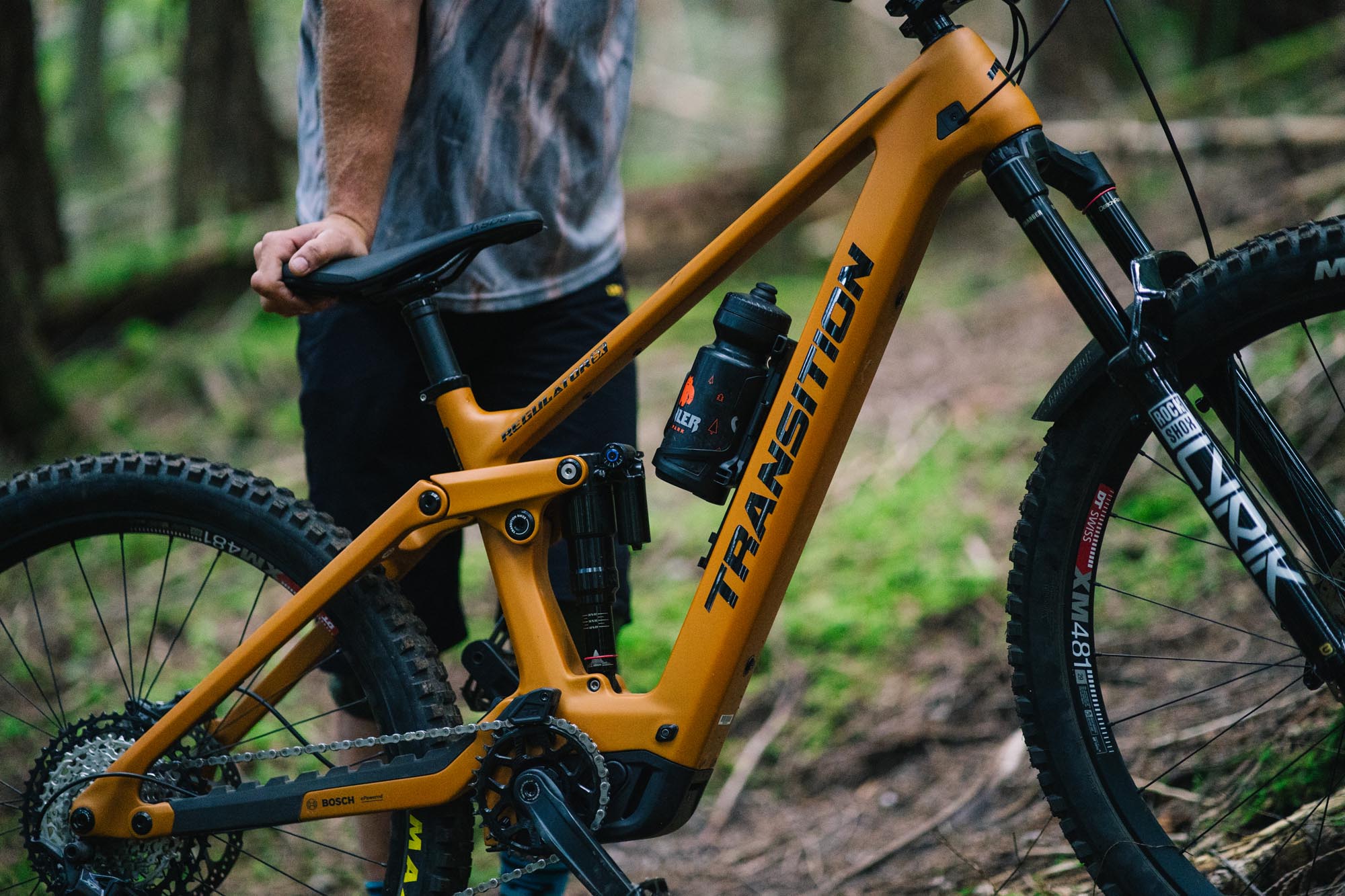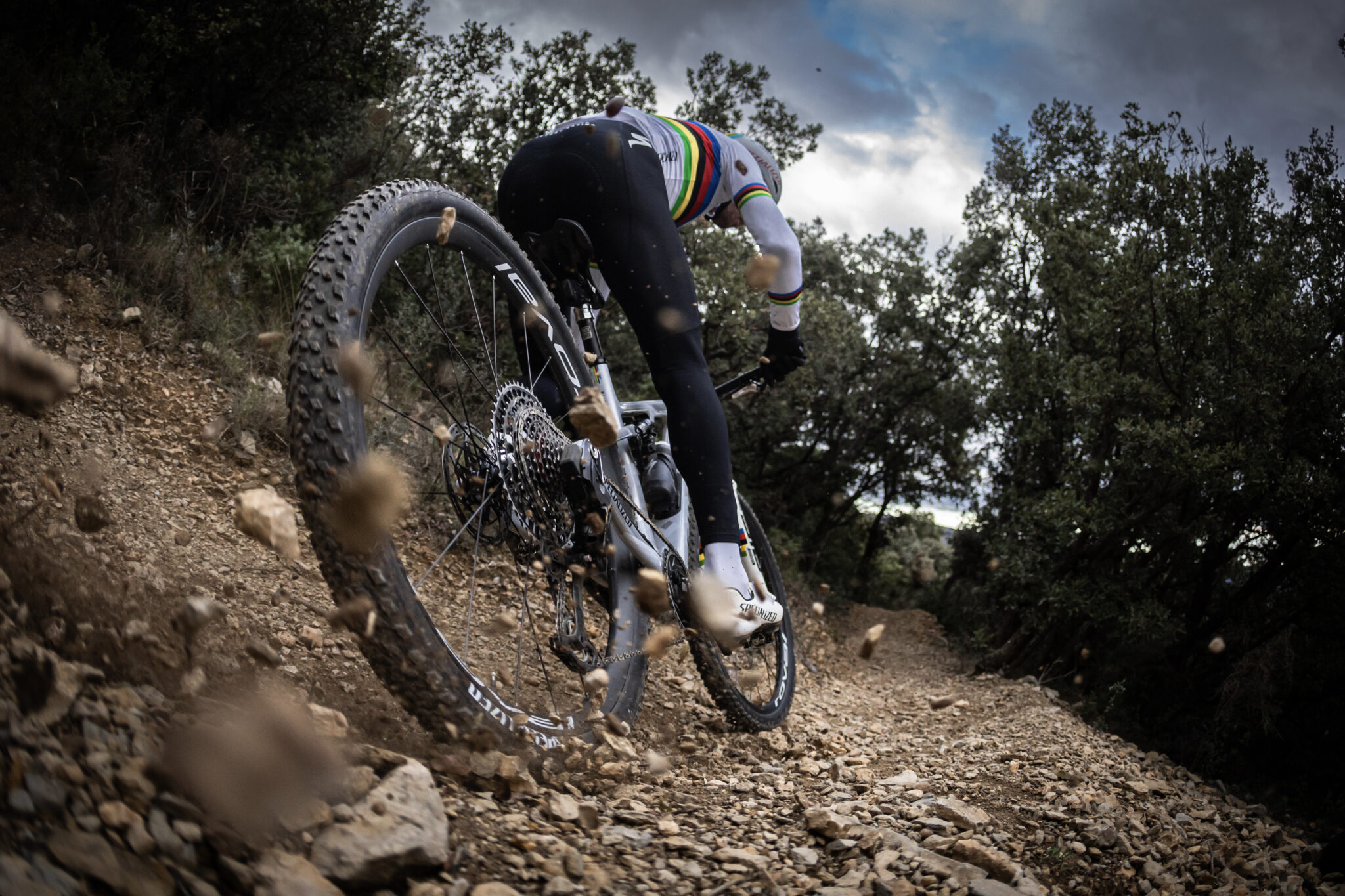TESTED: Fuji Auric 1.3
Images: Tim Bardsley-Smith
Images: Tim Bardsley-Smith
Fuji may not be the first brand that comes to mind in the current world of ‘enduro’ style bikes. More known for their road bikes and recreational models the Fuji Auric is set to launch the brand into the long travel trail bike world.
Consisting of a hydroformed A6 SL alloy frame, Fuji’s top of the range lightweight, variable butted aluminium frame material, the Auric delivers a bike with 160mm of travel front and rear. The frame features a tapered headtube, BB30 press fit bottom bracket with ISCG 05 mounts, sealed cartridge bearings on all pivots and internal cable routing, including ports for stealth type dropper posts.
Our test bike, the Auric 1.3, sits next to top in the 4 model range and comes complete with a very capable group set and parts mix featuring, DT Swiss, Fox, SRAM and Shimano. Suspension is taken care of by Fox front and rear. Front suspension is provided by a Fox 36 Factory series fork with 3 position compression damping using Fox’s new Fit4 system and external rebound adjustment. This provides 160mm of sublimely smooth and progressive travel in the yet to be rivalled super stiff 36mm stanchion fork chassis. Rear travel is perfectly controlled by a Fox Float Factory EVOL air can with 3 position compression damping and external rebound, the whole shock, body and piston is Kashima coated and again provides stiction free shock stroke.
The rest of the build kit crosses brands to give a best case scenario for durability and performance. Using SRAM’s 11 speed system, Fuji have chosen to use the X1 componentry rather than the more expensive XO1 or XX1 group. Complementing the game changing 10-42 cassette is an Oval Concepts BB30 crank with Praxis Works narrow wide 32 tooth chain ring. Moving away from SRAM Fuji use Shimano XT, M8000, brakes to provide stopping power with 180mm rotors front and rear.
Wheels are provided by DT Swiss, using their Spline2 M1700 wheel set, with 15mm axle front and 148×12 ‘Boost’ rear axle, with the hoops shod with Schwalbe Nobby Nic tyres in 27.5″ x 2.35″, set up with tubes but complete with tubeless ready kit. Oval Concepts finish of the build using their bars, stem, grips and saddle. The final feature is the KS Lev dropper post with stealth routing.
When assembling a bike it is normal to make a few mental notes, while assembling the Auric I had lots of time to make these notes as the pre build was not of a standard that most bikes now come at, the Auric took far longer to assemble than I have come to expect, with some parts requiring disassembly to complete the build while other parts in the box not being required at all! Although not an issue for the end user, the shop guys will notice this.
After the build was complete it was time to ride. The Auric 1.3 has a reasonable weight of just over 13kgs without pedals, not heavy when considering it is a 160mm travel bike. However, the weight is brought down at a cost with the M1700 wheels, with a narrow 22.5mm inner width, and fairly light tyres, this combination feeling mismatched to a bike featuring Fox 36 forks and capable suspension.
On the trail with the Fuji Auric
First ride out, I went with the old school inner tube set up. This soon turned into a mistake by getting a snakebite off a seemingly innocuous section of trail. A quick fix had me going again only to suffer from another puncture a few kilometres down the track! Just as a reference, I usually ride about 100 kms per week and haven’t had a puncture for I’d guess almost 2 years.
So back to the lab for the Auric to convert the wheels to tubeless, which turned out to be a very simple operation as the DT wheels come ready taped and Fuji supply tubeless valves. The Schwalbe tyres quickly sealed onto the rims with a very satisfying ping and we were ready to play again.
Ride take 2. With the tubeless tyres fitted I was able to properly ride the Auric 1.3. Initial thoughts were that the frame felt too steep in the head angle, listed at 67 degrees, and a little too short in the top tube, despite our large model frame having a 625mm effective top tube and a 435mm reach. While riding level or slight undulating singletrack this isn’t a disadvantage as the steering remains more precise at the relatively slow speeds. When opening up the gas and navigating fast, steep sections this predictability turns into borderline front end instability and leaves you wondering if this geometry is really suited to a 160mm travel bike?
When traveling at speed a lead from the rear technique has to be employed and let the excellent M system rear suspension configuration keep you grounded and on track.
The parts package is however a pleasure to use with everything working predictably as it should, save for the more trail oriented wheels, the parts package suits its intended use 100% without paying out double the price to save a few grams. Fox have always been at the forefront of bike suspension and have always made incremental improvements year on year, however, there has always been an issue in setting Fox products up to achieve the perfect medium between small bump compliance and traction and big hit capabilities. Fox have addressed these criticisms with their 2016 fork and shock range with the 36 fork and EVOL shock, a shock with no piggy back damping, being the best product range they have ever made.
The SRAM/Shimano mix for stop/go duties work very well together, with no equipment clashes on the bar the 2 separate company’s components fit perfectly together. The KS Lev dropper post is also a great piece of kit, my only criticisms being the flimsy plastic actuator clamp and that you have to be fully off and away from the seat for it to return. I found that with even a small amount of pressure off my thigh on the side of the seat would stop the post from rising, not a big issue and one that can be amended after with the slightest adjustment to your riding style, on the flipside, the post descends with almost no effort making last minute seat drops quick and easy.
In riding the Auric I found it to a very plush, but not overly active ride. The M system (mid link) also shared with Breezer is designed to minimise the amount that the linkage moves with its designers claiming that the linkage only moves 3 degrees to full travel. Although the system does look a little left of centre compared to most other modern designs the system does work extremely well, providing a very predictable and plush ride with little to no perceivable suspension wallow. To achieve this, while still keeping small bump compliance as well as big hit performance, shows that the M system is as competent as many or any of the other systems employed in the industry.
In my opinion the Auric would suit someone who is venturing into the ‘enduro’ world rather than someone who has always ridden in that type of style or manner such as downhillers looking for a trail bike. It handles better at slow speeds than many super low and raked out bikes but falls short in steep sections which depending on the pilot may not be an issue. The bike packs down evenly in bermed corners, and fights for traction on flat corners, this perfect combination achieved through the Fox suspension set up and the M system suspension, the Auric also doesn’t mind a bit of air time either, with the 67 degree head angle not squashing the lips of your favourite trail jumps too much it’s easy to keep composure in the air.
 (c) Tim Bardsley-Smith
(c) Tim Bardsley-SmithFinal thoughts on the Fuji Auric
All in, the Auric 1.3 is a bike that is not exactly the sum of its parts, the mismatched wheels were a letdown, the E series 1700s would have been a better choice. Geometry wise, the numbers don’t tell the full story of the bikes capabilities. At $5099 retail the Auric is fairly priced, and sits competitively in the industry for an alloy frame with this level of componentry. Certainly worth a look if you have found that your old XC bike is feeling a bit out of date and you are looking for new challenges on the trail, if considering a purchase, I’d advise a demo first.
Three things you liked about the bike:
1. Really stable suspension and great front and rear balance
2. A great drivetrain package
3. Playful handling in the air
Three things you would change about the bike:
1. A stiffer wheel set
2. Make sure you run it tubeless
3. Play with some offset bushings to achieve a slacker head angle
Essentials
RRP: $5099
Weight: 13.18kg (as tested)
From: ocbicycles.com.au
Available Sizes 15”, 17”, 19” (tested), 21”

